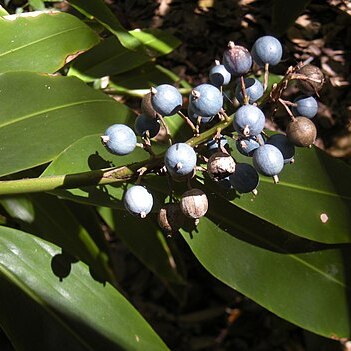A ginger plant up to 2 m high. It spreads 1-1.5 m wide. It has several stems. These stems rise from the rhizome. The leaves are simple and up to 40 cm long. They are dark green. Sometimes the leaves can have a purple tinge underneath. The flowers occur in a spike at the tip of the stalk. The flowers are white and have a perfume. The fruit are about 10-18 mm across and occur in upright bunches on the tips of the leaves. They are blue. There are several seeds inside. The flesh around the seed is edible.

